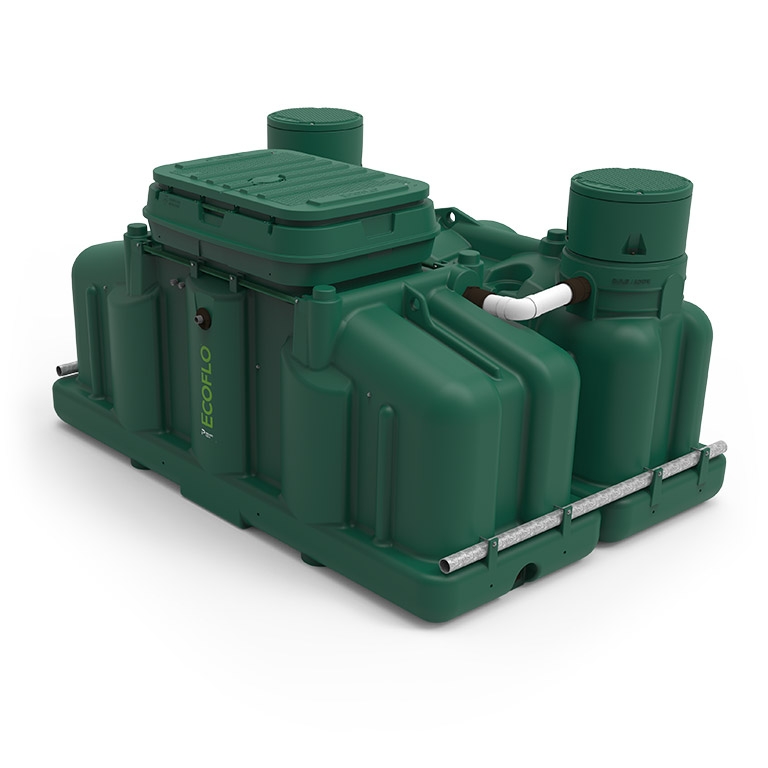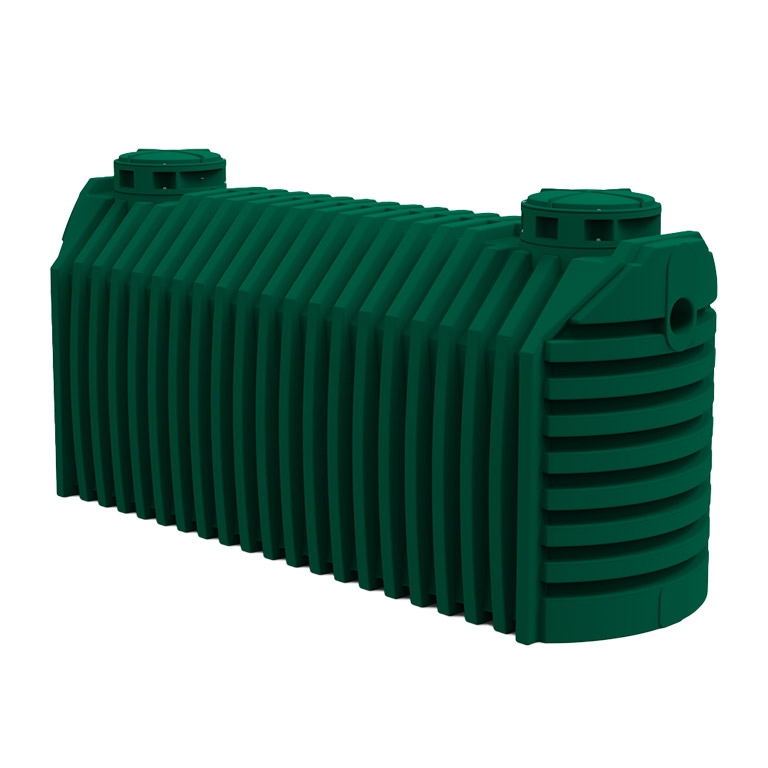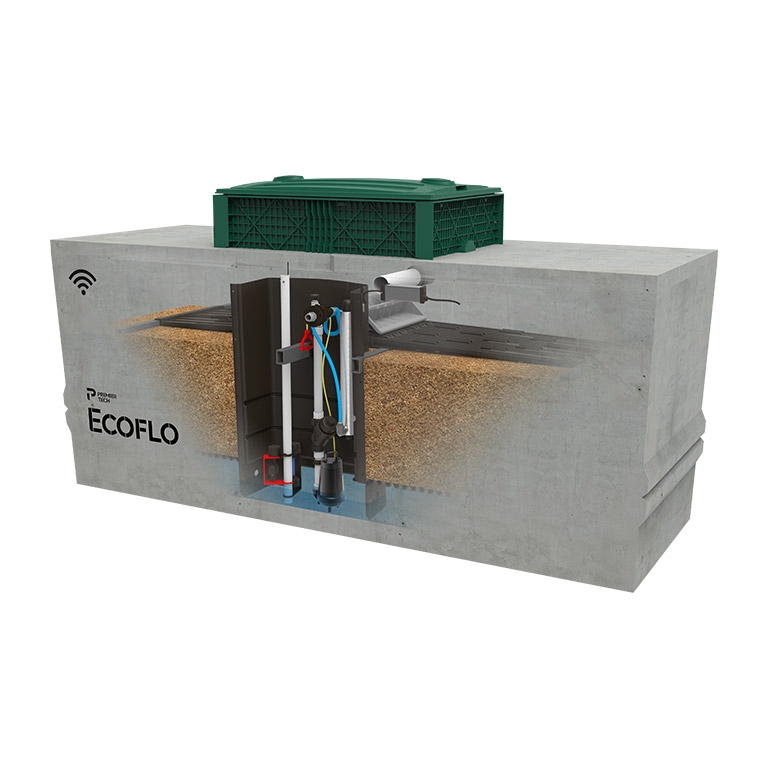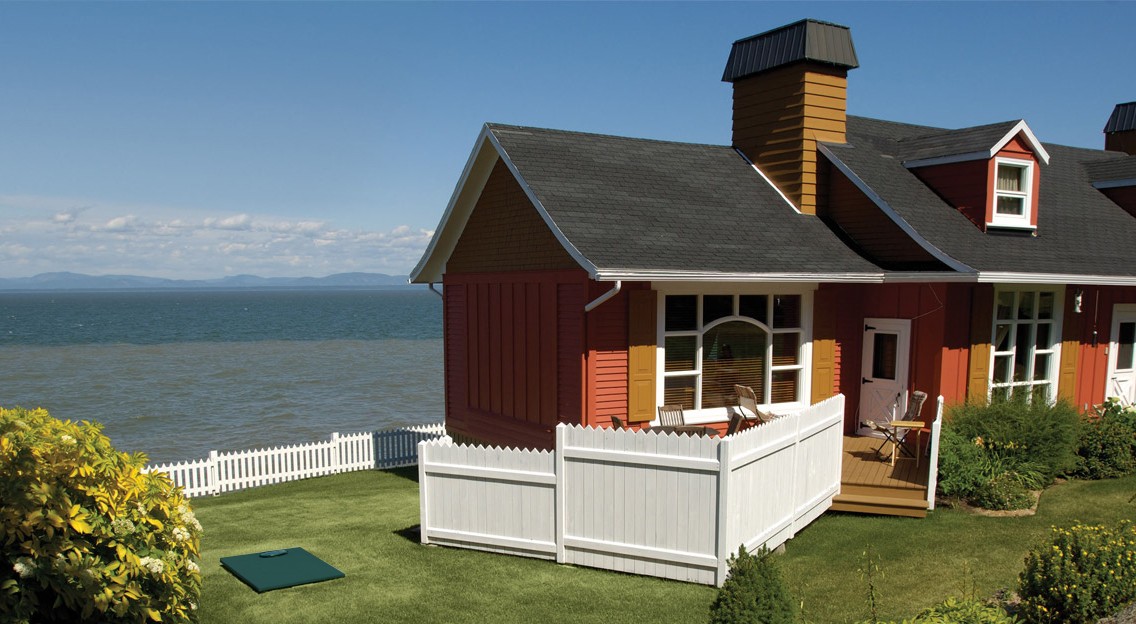What are the different types of septic systems?
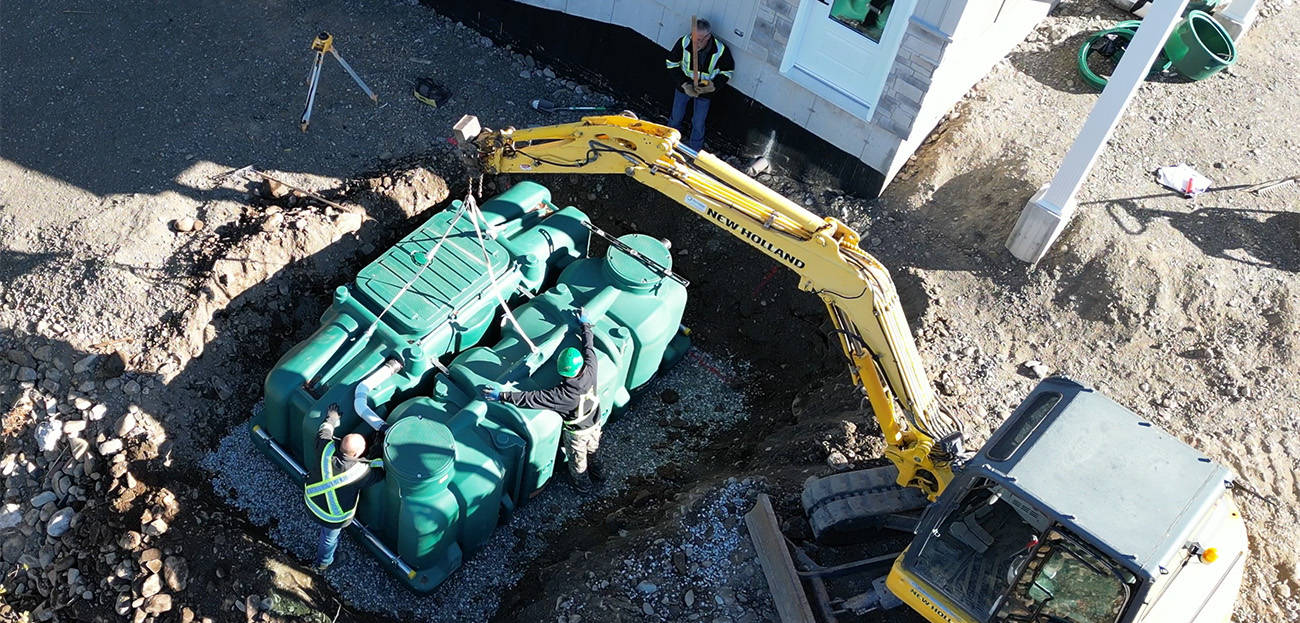
Feeling overwhelmed with technical jargon as you search for a septic system for your home or cabin?
Don't worry, you're not alone.
We understand how tough it can be to find a solution that works for you.
That's why we made a guide to explain the different types of residential septic systems available in the United States. We'll tell you where each one is used, how it works, and what makes it a good choice (or not-so-good choice) for your needs.
Table of contents
| 1. | Basic septic systems | |||
| 1.1. | Traditional systems | |||
| 1.2. | Chamber systems | |||
| 2. | Advanced secondary treatment systems | |||
| 2.1. | Biofilters | |||
| 2.2. | Aerobic treatment units (ATUs) | |||
| 2.3. | Sand mounds | |||
| 2.4. | Recirculating sand filters | |||
| 2.5. | Drip irrigation systems | |||
| 2.6. | Evapotranspiration beds | |||
| 2.7. | Constructed wetlands | |||
| 3. | Tertiary treatment systems | |||
| 3.1. | UV disinfection | |||
| 3.2. | Nitrogen reduction | |||
| 3.3. | Phosphorus removal | |||
| 4. | What is the best septic system? | |||
The most basic septic systems
For many rural homeowners, a basic septic system is the go-to solution for wastewater treatment.
This category includes “old types of septic systems” that are economical and easy to install thanks to their straightforward designs. They are a popular choice for flat properties with plenty of space, permeable soil, and a low water table.
There are two basic systems to consider: traditional and chamber systems. While they both operate on similar principles, each has its own set of advantages and disadvantages.
Traditional septic systems
A traditional septic system has a septic tank connected to a drain field (also known as a leach field). In most cases, the drain field is a network of perforated pipes placed over a bed of gravel and sand.
This system is often the solution of choice due to its simplicity. The purchase and installation costs are modest, and maintenance is mostly limited to regular septic tank pump-outs. On the flip side, traditional systems do not last forever. When the time comes for a replacement, extensive excavation is necessary, which can damage your landscaping.
How does a traditional septic system work?
A traditional septic system works in a few simple steps.
Wastewater flows into the septic tank, where solids settle on the bottom and scum floats to the top. Clarified liquid flows through an outlet pipe to a drain field. Once there, it seeps onto a bed of sand and gravel and percolates through the ground.
Microbes in the soil remove any remaining contaminants. Treated wastewater then returns to the groundwater below.
Traditional septic system pros and cons
Advantages:
- economical
- silent
- no mechanical parts
- minimal maintenance
Disadvantages:
- not appropriate for sites with impermeable soils or high water tables
- large overall footprint
- full excavation needed to replace system
Chamber septic systems
Like traditional septic systems, chamber systems have a septic tank with an outlet pipe that leads to a drain field. The difference is that a chamber septic system has a specialized dispersal area with open-bottom plastic leaching chambers.
Chamber drain fields have a higher treatment capacity than traditional drain fields. This reduces the risk of hydraulic overload, which happens when incoming wastewater exceeds the flow rate that your system was designed to handle.
These drain fields also reduce the need for gravel. By using less material than a traditional system, you may lower the overall cost of the installation.
How does a chamber septic system work?
A chamber septic system uses a septic tank for primary treatment. The septic tank clarifies wastewater before discharging it to the specialized drain field.
The drain field has plastic leaching chambers that contain perforated pipes. The pipes disperse effluent into the chambers. The chambers retain some of the effluent and allow the rest to percolate into soil or system sand.
Microbes in the underlying soil complete the treatment process by removing any remaining contaminants.
Chamber septic system pros and cons
Advantages:
- economical
- no mechanical parts
- high-capacity drain field
- smaller footprint than traditional septic systems
- minimal maintenance
Disadvantages
- not appropriate for sites with impermeable soils or high water tables
- full excavation needed to replace system
Advanced secondary treatment septic systems
Advanced secondary treatment septic systems offer a higher level of treatment than basic systems, providing an added layer of protection for your family and the environment.
While these systems come with a higher price tag, they are also highly specialized and can be tailored to work with difficult soils, smaller lots, and uneven terrains. That makes them a great solution if you face these challenges.
Choosing an advanced system can be daunting, but we have you covered. We’ll explain all the information you need to pick the right system for your property.
Biofilters for wastewater treatment
Biofilters use a passive treatment process called biofiltration. Instead of relying on chemicals or electricity, biofilters let wastewater flow through a filter made of organic or synthetic materials. The filter mimics the way soil naturally treats wastewater.
Typical filtering media include peat, sand, geotextile sheets, and foam cubes. But if you’re looking for a more environmentally friendly way to treat your wastewater, we suggest the coconut husk fragments in our Ecoflo products.
The Ecoflo compact biofilter is perfect for small lots, impermeable soils, and sites with limited access. Polyethylene, concrete, and fiberglass models are available.
How does a biofilter treat wastewater?
A biofilter system uses a septic tank for the first stage of treatment. Raw wastewater enters the septic tank and clarified liquid moves on to the biofilter unit.
Inside the biofilter, wastewater trickles through a filtering medium where bacteria naturally grow. These bacteria remove pollutants, simulating the treatment process that takes place in permeable soil. Biofilters are designed to promote free airflow, creating perfect conditions for microbes to thrive and carry out effective treatment.
After wastewater is treated in the biofilter, the system sends it to a drain field or safely releases it into the environment.
Biofilter septic system pros and cons
Advantages:
- compact and discreet
- appropriate for sites with impermeable soils and high water tables
- ideal for variable flow rates and periods of non-use
- no electricity for treatment
- low operating costs
- no (or few) mechanical parts
- easy access for repairs and filter renewals
Disadvantages:
- regular maintenance
- higher purchase cost than basic systems
Aerobic treatment units
An aerobic treatment unit (ATU) is a treatment tank where air is injected to encourage the growth of helpful bacteria. These bacteria feed on wastewater pollutants.
ATUs are more efficient at breaking down organic waste than basic septic systems, which makes them a good choice for areas with higher effluent standards. They also work well on properties with poor soils or high water tables. But there are some negatives. ATUs need electricity and compared to other systems, they require more upkeep to maintain their treatment performance.
How does an ATU septic system work?
The septic tank is an important part of an ATU system. It traps solids and scum and sends clarified wastewater to the ATU.
The ATU tank has an aeration chamber. Pumps inject air into the chamber to support the growth of bacteria and other microorganisms that break down pollutants. Aeration also maximizes treatment efficiency by allowing more contact between bacteria and pollutants.
Bacteria may live in different places depending on the type of ATU you choose. Suspended growth treatment units keep bacteria in the liquid inside the aeration chamber. In attached growth treatment units, bacteria are attached to a synthetic material, such as plastic balls, ribbons, or shavings.
After treatment, the ATU discharges wastewater to a drain field for final dispersal.
New ATU septic systems do not offer peak performance on Day 1. They need a start-up period of a few days before microbes in the aeration chamber can effectively treat wastewater.
ATU septic system pros and cons
Advantages:
- breaks down organic matter
- compact and visually discreet
- appropriate for sites with impermeable soils and high water tables
- accessible for repairs
Disadvantages:
- frequent maintenance
- higher purchase cost than basic systems
- electricity for air pumps
- noise from air pumps
- mechanical parts can malfunction or break
- risk of untreated effluent contaminating soil
- limited ability to handle sudden increases in wastewater flow
- lag time between installation and effective treatment
Is an ATU better than a biofilter?
To decide if an ATU is better than a biofilter, look at a few key factors:
- installation requirements
- treatment performance
- sludge build-up
- long-term costs
We made the choice easier for you with a buying guide that compares two popular options: Bionest-type ATUs and the Ecoflo biofilter.
Sand mound septic systems
Sand mounds (sometimes called turkey mound septic systems) use an elevated above-ground sand layer as a substitute for permeable soil. Bacteria in the sand layer break down wastewater pollutants before effluent is released back into the environment.
These systems are a good option for sites with impermeable soils or high water tables. But they require more space and sand than other options. As septic sand becomes increasingly scarce, it’s important to ask if this solution aligns with your environmental values.
How does a sand mound septic system work?
In a sand mound septic system, the septic tank separates solid waste and scum from wastewater. Clarified liquid then moves downstream to a dosing chamber.
The dosing chamber pumps measured doses of wastewater to the top of the sand layer. As wastewater trickles through the sand, naturally occurring bacteria remove contaminants. Treated effluent then seeps into an underlying trench before returning to groundwater.
Sand mound septic system pros and cons
Advantages:
- low operating costs
- appropriate for sites with impermeable soils and high water tables
Disadvantages:
- large overall footprint
- not discreet
- pumps are required
- mechanical parts can malfunction or break
- full excavation needed to replace system
- septic sand is non-renewable and increasingly expensive
Recirculating sand filter system
Recirculating sand filter systems treat wastewater by combining an elevated above-ground sand layer with a recirculation station. Bacteria in the sand layer remove contaminants before effluent is dispersed.
These systems are most often used on sites with impermeable soils, high water tables, and abundant space. But because they need a lot of sand, and septic sand is running out, you may decide that a greener solution is a better fit for your property.
How does a recirculating sand filter work?
A recirculating sand filter uses a septic tank for primary treatment. Raw wastewater enters the septic tank and clarified effluent moves on to a recirculation station.
The recirculation station always contains a portion of treated wastewater. This liquid mixes with and dilutes wastewater that arrives from the septic tank.
The recirculation station’s pump sends measured doses to the sand filter. Wastewater seeps through the sand, where bacteria remove pollutants. Treated wastewater collects in drains beneath the sand layer. A portion returns to the site’s native soil, and the rest goes back to the recirculation station.
Sand filter septic system pros and cons
Advantages:
- more compact than sand mound systems
- appropriate for sites with impermeable soils and high water tables
Disadvantages:
- not discreet
- regular maintenance and monitoring
- electricity for pumps and controls
- mechanical parts can malfunction or break
- full excavation needed to replace system
- septic sand is non-renewable and increasingly expensive
Drip irrigation septic systems
Drip irrigation systems are sometimes known as trickle irrigation or drip distribution systems. They are a bit like basic septic systems. They treat wastewater in a septic tank and a drain field. But instead of using perforated drain field pipes, they release effluent through a network of specialized tubes.
The flexibility of drip tubing makes these systems a good choice for sloped sites. The overall footprint is discreet, but it tends to be larger than that of traditional drain fields.
How does a drip irrigation septic system work?
The first component in a drip system is the septic tank. Wastewater solids settle at the tank’s bottom and scum rises to the surface. Clarified liquid exits through an outlet pipe that leads to a dosing device.
The dosing device sends measured doses through a network of tubes in the drain field. Wastewater drips through perforations in the tubes and onto a bed of sand and gravel. Microbes in the soil remove contaminants before effluent returns to groundwater.
Drip irrigation systems often use a filtering or flushing device to avoid premature clogging by larger particles.
Drip septic system pros and cons
Advantages:
- control over amount of wastewater sent to drain field
- ideal for sloped sites
- appropriate for sites with shallow soils
- visually discreet
Disadvantages:
- frequent maintenance
- electricity for pumps and controls
- mechanical parts can malfunction or break
- large overall footprint
- full excavation needed to replace system
Evapotranspiration bed septic systems
Evapotranspiration bed septic systems use natural evaporation and transpiration processes to send treated wastewater into the atmosphere rather than groundwater.
Depending on factors like soil and weather, certain installations may combine both atmospheric discharge and soil infiltration.
Because they don’t rely on soil infiltration alone, these systems can be used on sites with impermeable or arid soils, low percolation rates, or high water tables. As a bonus, the plant life needed for transpiration may enhance the visual appeal of the installation.
How does an evapotranspiration bed work?
Evapotranspiration bed systems include a septic tank. The tank retains solids and scum and allows clarified liquid to flow into a series of distribution pipes.
The pipes send wastewater into the evapotranspiration bed’s lower level, which is filled with sand and has an impermeable liner that prevents soil contamination. Effluent slowly rises to the bed’s surface, where it eventually evaporates.
Plants on the bed’s surface provide additional treatment by absorbing wastewater through their roots. This allows effluent to naturally transpire into the air.
Evapotranspiration bed pros and cons
Advantages:
- appropriate for sites with shallow or arid soils and high water tables
- low operating costs
- plant life improves visual appeal
Disadvantages:
- larger footprint than other systems
- constant maintenance
- not suitable for all regions
- excess rain can impair treatment performance
- full excavation needed to replace system
Constructed wetland septic systems
Constructed wetland septic systems, also called reed beds, treat wastewater by imitating the processes in natural wetlands and marshes. These systems look a bit like a pond. Aquatic plants float on the surface. A gravel bed on a waterproof lining sits at the bottom.
This type of solution offers cost-effective treatment and an aesthetically pleasing appearance. The trade-off is that it requires plenty of space and needs constant maintenance. Special care must also be taken to avoid invasive aquatic plants that attract pests.
How does a constructed wetland septic system work?
Like other advanced secondary systems, constructed wetlands rely on a septic tank for primary treatment. The tank retains solids and scum from raw wastewater and allows clarified liquid to flow into a pond.
As soon as wastewater arrives in the pond, submerged plant roots and microbes in the gravel bed begin to remove contaminants. The roots also feed the pond with oxygen and help to reduce concentrations of nitrogen and phosphorus.
A sump regulates the pond’s water level and sends effluent downstream for further treatment or safe dispersal.
Constructed wetland pros and cons
Advantages:
- low operating costs
- enhanced visual aspect
- reduces nitrogen and phosphorus concentrations
Disadvantages:
- constant maintenance
- large overall footprint
- not appropriate for sites with high water tables or dry soils
- electricity for sump pump
- mechanical parts can malfunction or break
- possibility of invasive plants or pests
- full excavation needed to replace system
Tertiary treatment septic systems
Tertiary treatment septic systems use highly developed processes to produce effluent that is up to 10 times cleaner than that of basic septic systems. They protect public health and sensitive environments by ensuring that treated wastewater meets the most stringent regulatory standards.
There are two main types of tertiary treatment systems: disinfection and nutrient removal. Disinfection systems eliminate harmful pathogens like bacteria, viruses, and parasites. Nutrient removal systems target phosphorus or excess nitrogen, which can harm delicate ecosystems.
Tertiary systems offer flexibility, allowing property owners to release treated wastewater directly into watercourses or ditches (a process called surface discharge). They are especially useful on sites that can’t support a typical drain field.
UV disinfection systems for wastewater treatment
Ultraviolet (UV) disinfection systems use UV rays to eliminate harmful microorganisms from wastewater. This tertiary technology allows the safe discharge of treated wastewater directly into watercourses or ditches.
UV disinfection systems are ideal for sites with limited space or inadequate soil conditions for a conventional septic drain field. However, it's important to consider the long-term operating costs, such as electricity, bulb replacements, and regular maintenance.
How does a UV disinfection system work?
A UV disinfection unit receives wastewater after it passes through a septic tank and an advanced secondary treatment system.
Inside the disinfection unit, wastewater circulates around a UV lamp protected by a quartz sleeve. Radiation from the lamp penetrates wastewater and kills viruses, parasites, and harmful bacteria. The treatment process uses no chemicals and produces no harmful by-products.
After disinfection, the unit pumps treated wastewater downstream, where it is safely discharged into a ditch or watercourse.
UV disinfection septic system pros and cons
Advantages:
- produces high-quality effluent
- appropriate for sites with impermeable soils
- ideal for small lots
Disadvantages:
- regular maintenance (often twice per year)
- electricity for UV lamp
- costs to replace UV lamp
Nitrogen reducing septic systems
Nitrogen reducing systems use aeration or recirculation to remove nitrates and other nitrogen compounds from wastewater. Without treatment, these compounds lead to algae blooms in nearby lakes and rivers. They also put public health at risk by contaminating drinking water resources.
This treatment solution is compact and discreet, making it ideal for small lots in ecologically sensitive areas. But like other tertiary systems, it requires regular maintenance and electricity to power pumps.
How do low-nitrogen septic systems work?
There are a few low-nitrogen technologies on the market, and no two work in exactly the same way. As a basic introduction to this type of solution, we'll use our Rewatec nitrogen removal system as an example.
First, raw wastewater flows into a septic tank. Solids settle on the bottom and clarified liquid flows into the Ecoflo compact biofilter for treatment.
Inside the compact biofilter, wastewater percolates through a coco filter that traps and removes pollutants. Ammonia and organic nitrogen compounds naturally convert into nitrates during this process.
After wastewater passes through the coco filter, it moves into a flow divider tank. The flow divider recirculates one portion of treated wastewater to the septic tank, where nitrates transform into harmless nitrogen gas that evaporates in the air.
The flow divider safely discharges the remaining portion of treated wastewater into the environment.
Nitrogen reducing septic system pros and cons
Advantages:
- reduces nitrogen by at least 50%
- ideal for small lots
- protects sensitive environments
Disadvantages:
- regular maintenance
- electricity for pumps
Residential phosphorus removal septic systems
Phosphorus removal systems come in many shapes and sizes. Some use electricity to trigger chemical reactions that remove phosphorus from wastewater. This treatment prevents excess phosphorus in lakes and rivers, which would otherwise lead to algae blooms that suffocate native species.
Systems in this category offer reliability and ease of maintenance. But there are drawbacks. They produce more sludge than other systems, which means regular sludge removal is needed for optimal performance. The long-term operating costs are also higher compared to other tertiary treatment options.
How does a phosphorus removal system work?
There are many phosphorus removal technologies available. Each works a bit differently. Let's keep things simple by focusing on the ones that use electricity to trigger chemical reactions.
In these systems, wastewater first flows into a primary reactor. Solids settle on the bottom and clarified liquid exits through a pipe for further treatment.
The pipe leads to another tank that has two chambers: a reaction zone and a separation zone.
In the reaction zone, there are submerged electrodes. They release aluminum particles that react with phosphorus in wastewater. This process transforms soluble phosphorus into solid compounds.
In the separation zone, the solid particles settle on the bottom of the tank. They are then pumped back into the primary reactor, where they settle as sludge that can be removed as needed.
Clarified wastewater forms at the top of the separation zone. The system discharges this wastewater to a sand filter, where it safely disperses into the environment.
Phosphorus removal septic system pros and cons
Advantages:
- self-cleaning options available
- simple maintenance
- ideal for small lots
Disadvantages:
- produces more sludge than other systems
- higher operating costs than other tertiary systems
- electricity for pumps and treatment
So ... what is the best septic system?
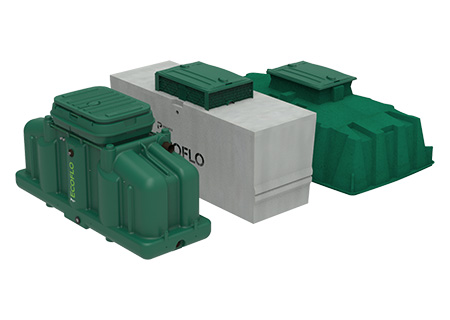
Based on our decades of experience in the wastewater treatment industry, we believe the Ecoflo range of septic systems is the best on the market. All models are discreet, they use no electricity, and they are installed for life.
Ecoflo systems use a sustainable coco filter that offers years of effective performance. When it clogs, there is no need to replace your entire system. Our team simply removes the old filter and installs a new one to restore your system’s original treatment performance.
The renewal process has no limits. You can repeat it again and again, for as long as you own your system. Plus, it uses no heavy machinery, and it has minimal impact on your landscaping.
That makes Ecoflo an excellent long-term investment for your property — and the planet.

Start your septic project here
Need help choosing a septic system for your home, cabin, or business? We're here for you!
Send us a few quick details and we'll give you free advice and product recommendations based on your needs.
